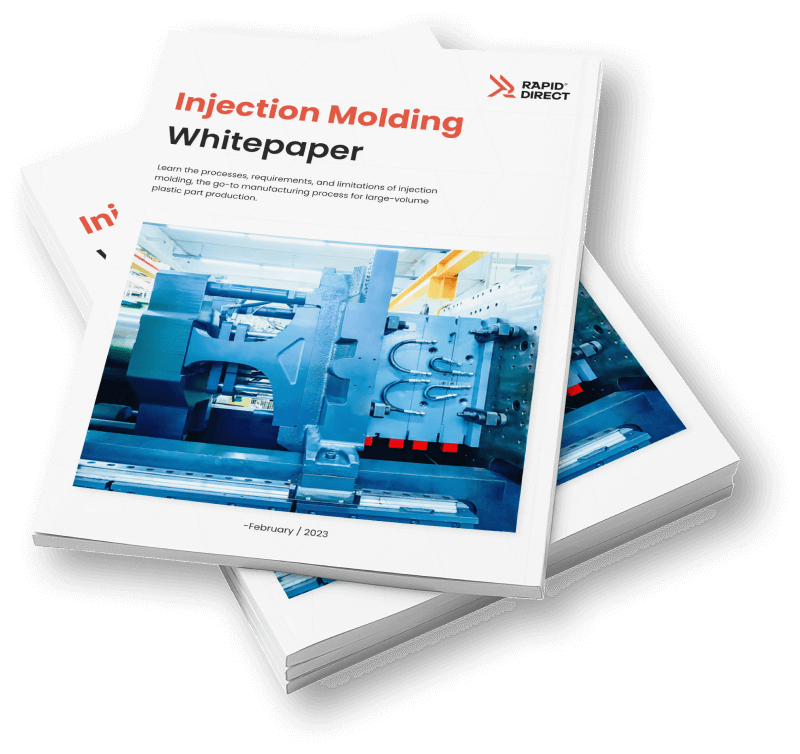Plastic products are widely used in several industries, ranging from home appliances to medical devices, automotive parts, and more. For this reason, plastic injection molding is a popular technique used across various sectors. If you’re seeking answers to the question, “what is injection molding?” Then you’re in the right place.
In this article, we’ll cover the essential details of the injection molding process. While the process is reliable and highly efficient, it must be adequately controlled to maintain the quality of final products. Therefore, we’ll take you through the step-by-step process while covering practical tips to get the best from injection molding.
What Is Injection Molding?
Injection molding is a plastic manufacturing process that involves melting plastic polymers to create plastic parts within a short period. This technique solidifies molten plastic resins under pressure in pre-machined molds that give the component its shape. Injection molding can help create hundreds and thousands of pieces at cost-effective prices. With this system, you can manufacture parts with diverse shapes, including those with complex dimensions.
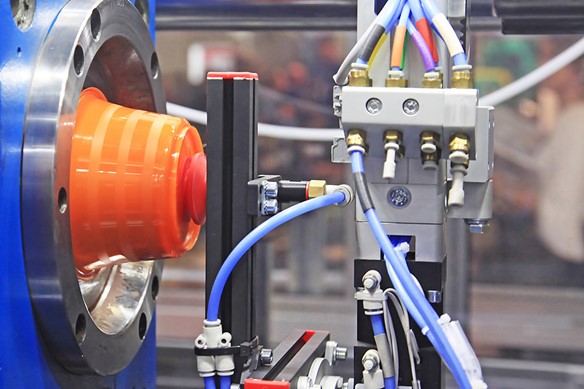
Importance of Injection Molding in the Manufacturing Industry
The popularity of plastic injection molding in the manufacturing industry today is no surprise. Plastic materials are now famous in many industries because of their affordability, durability, and extensive capabilities. High-end plastics offer exceptional strength, excellent durability & flexibility, and pleasant aesthetics.
Moreover, the availability of many recyclable plastic materials ensures environmental sustainability. Plastic molding techniques occur in a closed industrial loop which helps minimize waste production. In addition to being eco-friendly, injection molding is cost-effective, highly flexible, and precise. It ensures product manufacture within a short cycle time.
Brief History of Injection Molding
Injection molding had its theoretical foundation in the 19th century, which witnessed the patenting of the first molding machine. At this time, there were limits to the production of plastic components to simple items like buttons and combs. Their production also occurred at a very low scale. In 1930, popular thermoplastics were developed for modern production, including polystyrene, polyvinyl chloride (PVC), and polyolefins.
During this period, the demand for viable and cheaper alternatives to metals increased. This led to the development of modern injection molding systems. James Hendry built the first extrusion screw injection machines, and this innovation transformed the injection molding industry. Fundamental molding principles continued to evolve, coupled with continuous updates in injection molding machines.
Today, we have a much more developed injection molding technique, producing components that perform exceptionally well in several applications. The modern processes are also compatible with easily recyclable and more economical plastics. Therefore, it is safer and much more efficient.
Step-by-Step: Injection Molding Process
Now that you know the evolution of injection molding and why it is so valuable in the manufacturing industry, it’s essential to understand the process to help you get the best from your project. The injection molding process simply begins with heating plastic resin to the melting point. Then, machinists use existing molds to achieve the desired shapes of components. Mold design and preparation are also parts of the overall process. Let’s take a deeper look into the step-by-step process:
1. Design the Mold
Mold design and creation are fundamental parts of the molding process. Machinists use CAD designs and CNC machining processes to determine the specifications of the mold. The specifications include the dimensions, geometry, and even surface texture of the desired component.
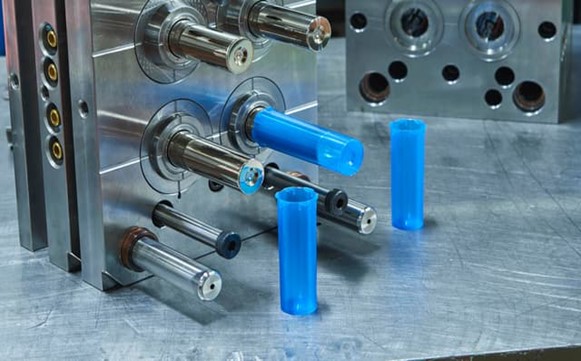
A tooling mold is carefully designed to have the cavity, core, and other features like sprues, gates, runners, ejector systems, and moving components. The cavity is the fixed part where the molten plastic is injected into. On the other hand, the core is the moving part fitted into the cavity to create the final shape of the component.
Manufacturers often use high-quality steel or aluminum materials to create durable molds that can go through several production runs. Fortunately, 3D printing offers a means to lower mold production, especially for short-run injection molding. Designing and manufacturing suitable molds requires high levels of skills and expertise. It is also important to run several tests and simulations to ensure the mold design meets custom requirements.
The mold design, fabrication, and approval phase is the most extended stage of the injection molding process. Consequently, the initial costs at this stage can be quite high. The common types of mold tooling used for manufacturing injection molded parts are:
Single Cavity Mold
This is the most basic type of mold involving the molding of only one part per injection cycle. It is suitable for small to medium production runs. It also ensures better control of the process, allowing for continuous running of the injection molding. Moreover, the tooling costs for a single cavity mold are relatively lower. Thus, they are excellent choices in applications with lower budgets.
Multi Cavity Mold
Multi cavity molds can produce multiple identical parts simultaneously, making them ideal for high-volume productions. They produce numerous components in a single injection cycle, shortening production time and lowering costs. However, these types of injection molds are more difficult to manufacture and require larger tonnage machines. Thus, the initial mold costs are higher when compared to single-cavity molds.
While multi-cavity molds have a higher initial cost, they help save costs in the long run. As a result, they are an excellent choice for projects requiring thousands to hundreds of thousands of units.
Stack Mold
A stacked mold comes with multiple mold plates arranged in parallel. They often have up to four levels to ensure increased efficiency. Building a stack mold takes longer than a traditional mold, resulting in higher initial costs.
However, manufacturers can reduce the clamp tonnage required per cycle to ensure lower operational costs. Furthermore, manufacturers can design stack molds to accommodate multiple materials, making it even more efficient.
2K Injection Mold
2K injection mold helps manufacturers to combine two or more different materials or colors to make one plastic part. This technology allows for the creation of custom components that meet specific functional and aesthetic requirements. The chemical bonding process joining the materials helps give the finished product a superior aesthetic and performance. Overall, 2K injection molding is an advanced and versatile manufacturing process, enabling unique design and material combinations.
2. Select Plastic Material
Before starting the molding process, one crucial step is choosing the most suitable plastic material for the desired component. While making this selection, you have to consider the interaction between the plastic and the mold tool. This is because some plastic materials may not be suitable for specific mold designs.
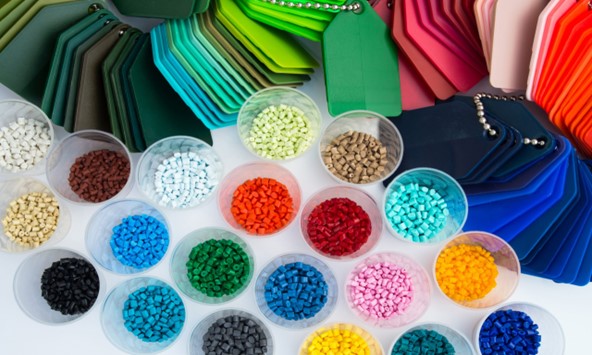
Testing the plastic material with the tool is crucial to ensure that the final product has the correct properties. Plastics have different molecular structures, giving them varying mechanical and thermal properties. The individual properties of plastic will determine its appropriateness for certain molds and products.
The most common injection molding materials include the following:
- Acrylonitrile-Butadiene-Styrene (ABS)
- Nylons (PA)
- Polycarbonate (PC)
- Polypropylene (PP)
- Teflon (PTFE)
- Acrylic (PMMA)
- Polyvinyl Chloride (PVC)
- PEEK
- High-Density Polyethylene (HDPE)
- Polystyrene (PS)
To choose a suitable material, you must have adequate knowledge of the structure and characteristics of the material. Field tests may also help gauge the performance of the material during application. After selecting the right material, production can begin.
3. Setup Machine
A critical step in the molding process is the setup of an injection molding machine. Mold installation necessitates meticulous attention to detail to ensure the correct alignment and securing of the mold to the machine platens. Before installing the mold, it is critical to check the machine’s specifications to ensure it can accommodate its size and weight.
The machine platens should be clean and free of debris or contamination that could interfere with the molding process or damage the mold. When the machine is ready, the mold is carefully placed onto the platens and aligned with the machine’s nozzle. Proper alignment is required to ensure the molten plastic resin flows evenly into the mold cavity, producing high-quality parts with consistent dimensions.
Once in place and secured to the machine platens with bolts, clamps, or other fastening mechanisms, running a test is crucial to ensure it works properly. The test involves passing some molten resin pellets through the molding machine to check for blockages, leaks, or other issues.
Setting up an injection molding machine requires skill and expertise. Proper machine setup ensures that the finished parts are high quality and consistent, reducing the risk of mold or machine damage.
4. Injection Process
The injection molding cycle is a continuous process – closing the mold tool, feeding melted plastic resins, and pressurizing them into the mold. Manufacturers use different types of injection molding, including:
Plastic Injection Molding Process
What is plastic injection molding process? It is a continuous cycle that includes several steps. After closing the mold, the plastic resins are heated and fed into the machine. Upon applying the appropriate pressure to the tool and screw, the gate opens, and the screw moves forward. Molten plastic is then injected into the mold, completely filling it.
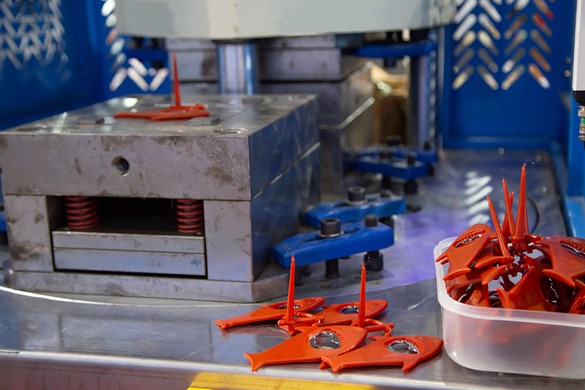
When the melted plastic reaches the end of the barrel, the machinist closes the gate that controls the injection of the plastic. The screw then moves back and draws through a predetermined amount of plastic, creating pressure in the screw for injection.
Simultaneously, the clamp pressure helps to hold the two parts of the mold tool close together. It is critical to balance the injection pressure and clamp pressure to ensure that the part correctly forms and that no plastic escapes the tool during the injection.
Overmolding Process
Overmolding is a specialized injection molding technique that combines two or more different materials to produce a single finished part. Molding a base or substrate part, placing into a mold cavity and overmolded with a second material, results in a finished product with improved functionality, durability, and aesthetics. Rigid plastic is often the base material, while the second is softer.
The overmolding process is typically divided into two stages:
- Molding the substrate or base part: The machinist molds the first material, usually a rigid plastic, into the desired shape and size at this stage. Then, the insertion of the base part into a second cavity begins the overmolding process.
- Overmolding in a different material: A second material, usually a softer and more flexible plastic or elastomer, is molded over the base part at this stage. The second material bonds with the first, resulting in a strong, long-lasting finished part.
Insert Molding Process
Insert molding uses pre-fabricated inserts placed into a mold cavity and molded over plastic resins to create a finished part. The following steps are typically involved in the insert molding process:
- Creating the inserts: The inserts, made of metal, ceramic, or plastic, are created before molding. Their designs allow them to fit into the cavity and their adhesive coatings aid their bonding with the plastic resin.
- Putting the inserts in the cavity: The insert molding design involves specialized tools, jigs, and fixtures. They help place the inserts into the cavity. Machinists place them precisely to ensure that they remain securely in place during molding.
- Molding the plastic resin: This step involves injecting the plastic resin into the cavity and molding over the inserts.
5. Cooling and Solidification
After filling the mold with plastic, including its sprues, runners, gates, and other components, it is kept at a specific temperature to allow for uniform solidification of the material into the desired part shape. Maintaining a holding pressure during this time helps prevent backflow into the barrel and to reduce shrinking effects.
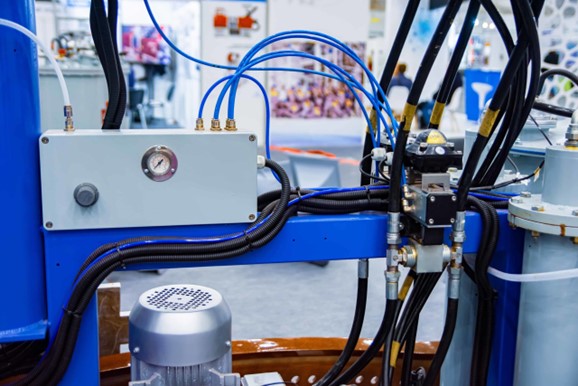
The holding pressure is critical to ensuring that the plastic packs out and forms correctly, resulting in a high-quality final product. The part’s size and complexity, the type of plastic used, and some other factors determine the holding time.
The screw retracts after the holding phase, releasing pressure and allowing the newly formed part to cool in the mold. The part remains in the mold during this phase, and the mold temperature remains constant to ensure uniform cooling throughout the part.
The cooling time is critical to ensuring the plastic part sets appropriately and retains its shape ejection from the mold. If the part is removed too soon, it may warp or deform, resulting in injection molding defects. Depending on the size and complexity of the part, the time can range from a few seconds to several minutes.
6. Ejection of the Part
The mold opens after the plastic part cools, and ejector pins or plates push the finished piece out of the tool. The injection molded part is placed in a compartment or conveyor belt to await finishing processes. The finishes can be polishing, painting, or removing sprues. Polishing can help smoothen rough surfaces or defects on the part, whereas painting can add color to the part.
7. Inspection and Quality Control
After finishing, an inspection of the parts follows in order to ensure they meet the required specifications. If there are any flaws discovered, the parts may have to be reworked or scrapped. After successful inspection, packaging and distribution of the molded component to suppliers and end users can begin.
Advantages of Injection Molding
Plastic injection molding is incredibly versatile, playing critical roles in developing products for different industries.
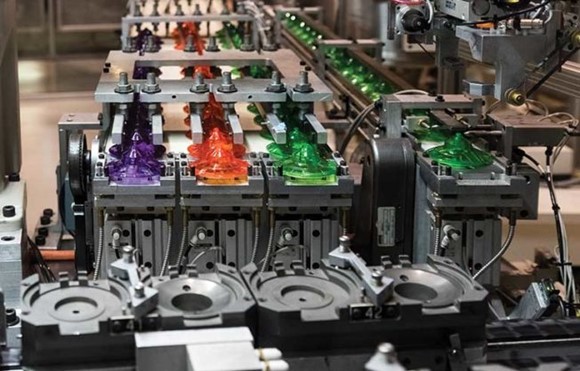
It offers several advantages, including the following:
Cost-effective
Injection molding is a cost-effective process that uses recyclable materials and produces less waste. Plastics are less expensive than other materials like metals and rubber. Moreover, Plastic molding is usually a popular choice for this reason. Recycling leftover plastic materials for another production process also offers cost-saving advantages.
Once the initial costs of mold design and production are out of the way, the labor costs are often low. Being a process with a high production rate, we can say that the mold pays for itself over time. Thus, it is an excellent choice for producing high-quality, high-volume plastic parts.
High Production Efficiency
The injection molding technique is famous for its fast production rate and efficiency. This high production output provides cost-saving advantages and makes the process ideal for mass production. The technique also focuses on repeatability, with low scrap rates compared to conventional processes.
A single mold tooling can produce hundreds and thousands of parts before requiring replacements. Many aluminum molds last up to 10,000 cycles, while production steel molds can last over 100,000 cycles. This ensures a repeatable, high-output process that meets tolerance and aesthetic requirements. You must note that the production speed often depends on the size and complexity of the intended injection molded part.
High Precision and Accuracy
With the advent of modern high-speed injection molding equipment, it is possible to produce precision-molded plastic parts consistently. The precision of injection molding is evident in its ability to produce parts with consistent quality, tight tolerances, and high dimensional stability. Plastic injection molding is often the best choice for components like gears and connectors as it can offer tolerances up to +/-0.0002”.
In addition, manufacturers often equip molding machines with advanced control systems. These automated systems monitor and adjust the process parameters in real-time. As a result, plastic parts are molded to exact specifications.
Versatility in Design
Injection molding ensures the production of components with intricate and complex geometrical features. Manufacturers often optimize the process parameters to achieve design versatility. Optimizing parameters like injection pressure, temperature, and speed will ensure the uniform injection of the plastic material into the cavity.
Additionally, machinists can enhance the process with advanced technologies like simulation software, automation, and 3D printing. These technologies help design and test mold tooling, process parameters, and molded parts. However, the design versatility of injection molding depends on the plastic material, part complexity, and mold design.
Wide Range of Materials
As mentioned earlier, injection molding is compatible with an extensive range of materials and colors. Over 25,000 engineering materials are available, including thermoplastics, thermosetting plastics, silicones, resins, etc. These options allow you to strike the perfect balance between materials’ mechanical, chemical, and physical properties.
You can easily combine materials to improve the product’s stiffness, strength, or impact resistance. For example, the overmolding design allows you to mold plastic materials over a metal substrate.
Disadvantages of Injection Molding
Despite its many advantages, this technique has a few drawbacks to note before you begin your project. They include the following:
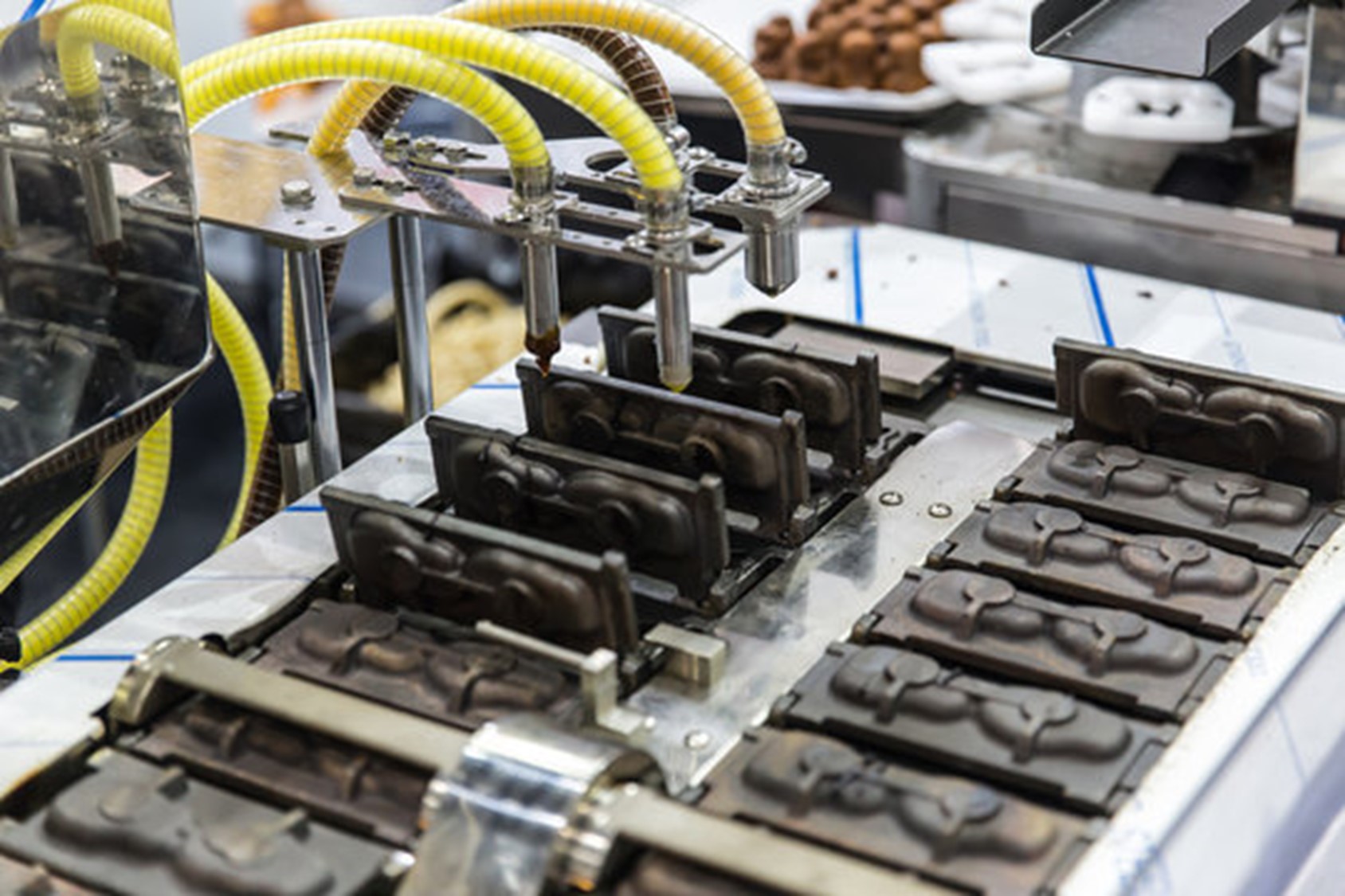
High Initial Investment
Custom mold tooling is necessary for every molded component. The creation of these molds often increases the initial costs of injection molding. It also makes it less economical for low-volume production runs. Mold tooling for simple designs and small batches can cost up to $5,000. In contrast, complex molds for large-scale production can cost a lot more.
Limited Flexibility
In contrast to CNC machining, which allows the production of parts from a computer design file that a software engineer can modify at any time, significant alterations to a plastic mold after tooling can be complex. There are two primary methods for changing a plastic mold.
One method is to increase the size of the mold cavity by cutting sections of the metal mold. This can result in the addition of plastic material to the part. Removing plastic material from the part, on the other hand, can be more difficult. Welding metal into the cavity may be possible in some cases but may not always be possible. Therefore, there may be a need to create a new cavity or an entirely new mold.
Long Lead Times
CNC machining can deliver parts within 5 to 10 days; industrial 3D printing typically takes 3 to 5 days to produce parts. However, injection molding has a longer lead time. The process often requires 5 to 7 weeks to manufacture tooling, followed by 2 to 4 weeks for production and shipping of parts.
A high-quality plastic injection mold can last a lifetime and incorporates complex runner and water-cooling systems to facilitate material flow and faster cooling. Due to its complexity, the designing, prototyping, testing, and tooling phases can take several months. Thus, injection molding is one of the lengthier plastic manufacturing processes.
Despite the long lead time, once the planning and tooling phases are complete, a plastic injection mold can produce millions of parts over its lifetime. The sheer scale of plastic part production often justifies the upfront costs and lost time associated with injection molding.
Material Waste
Some factors contribute to material waste during injection molding. They include:
- Mold design: Improper design and manufacture of mold may result in incorrect filling, packing, or filling of parts. This increases the waste produced.
- Overpacking: Injecting more plastic resin than necessary into the cavity will require trimming excess materials off the component. Thus, more waste is produced during the process.
- Sprue and runner waste: The design of these channels makes them larger in diameter than the desired final component. When eventually removed after molding, it results in material waste.
- Material handling: Poor handling of raw plastic pellets may lead to contamination, making them unusable.
Environmental Concerns
Like many other industrial processes, injection molding has some associated environmental concerns. Molding machines use a lot of energy for heating and cooling materials, operating machinery, and powering auxiliary equipment. This high amount of energy contributes to air pollution through gas emissions. The scrap materials from the process may also end up in landfills, contributing to environmental pollution.
Applications of Injection Molding
Plastic injection molding is a highly versatile manufacturing technique that is essential in developing a wide range of products, including appliances, automotive parts, medical devices, and more.
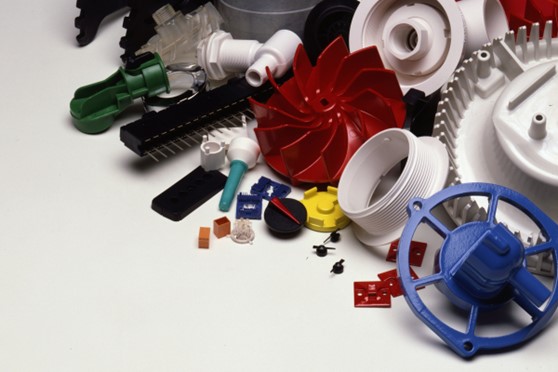
Let’s look at some of the applications of the process:
Automotive Industry
Many automobile manufacturers prefer plastic injection molding techniques because of their strength and accuracy. For instance, plastic components enhance the aerodynamic profile of the body and various parts of a vehicle. With the evolving demands of the sector, injection molding for automotive applications is the go-to option for manufacturers.
It produces components with excellent strength-to-weight ratios to save energy and minimize emissions. These parts also have better dimensional stability properties and are resistant to weather and wear. Examples of injected molded parts in the automotive industry are dashboards, bumpers, and minor elements like mirror housings, cup holders, and many others seen in cars.
Packaging Industry
The packaging industry uses components that are effective at developing creative designs for packaging that are appealing to customers. Asides from an appealing finish and aesthetics, the products must adhere to stringent rules for safety and sanitization. Injection molding can increase the overall quality of products without causing any significant problems.
Medical Industry
Custom plastic parts are used in many medical components, offering remarkable mechanical qualities and the highest precision. The medical sector is at the forefront regarding accuracy and sustainability. Medical plastic part manufacture is subject to very strict regulations. To be durable, medical parts also need the right chemical compounds and structural qualities that can withstand greater temperatures.
Injection molding is an excellent option because it offers outstanding durability, flexibility, strength, and easy modification. These qualities are essential for any operation in the healthcare sector. Common medical parts like dentures, surgical equipment, surgical room preparation equipment, and support for fractures use the plastic injection molding technique.
Consumer Goods Industry
The industry that manufactures household items uses plastic injection molding techniques more. The primary benefit of plastic injection molding for consumer goods is that it offers the finishing and aesthetics necessary for the intended purpose.
The technology produces components that are highly durable and of remarkable quality. Household items have used this technique since plastic products took over, proving how widespread it has become. Examples of consumer goods produced with injection molding include window holders, cutlery holders, handles, racks, etc.
Aerospace Industry
The aerospace industry has stringent rules regarding structural strength and precision. Plastic injection molding is used to create the aerodynamic components of most aircraft today. The aerospace industry is changing patterns to adopt this method for part manufacturing.
Many products in the industry, ranging from small parts to complex components, use injection molding. Examples of such components are turbine blades and housings, panels, chassis components, panels, enclosures, etc.
General Rules of Thumb for Injection Molding Process
Before starting the molding process, it is crucial to consider the correct parameters. Then you find the right balance between performance, speed, and cost.
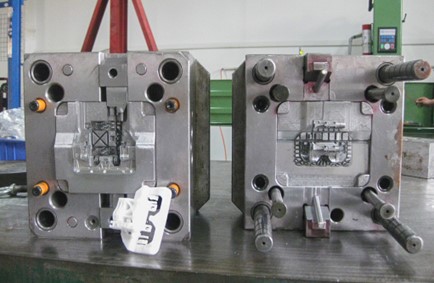
Ensure Part Design with Uniform Wall Thickness
Ensuring uniform wall thickness is an essential principle in injection molding design. Lack of consistency in the thickness can lead to numerous issues. These include mechanical faults such as stress concentration and micro-cracks spread over time.
Additionally, the variability in the wall thickness can cause shrinkage inconsistencies, resulting in further complications. Ideally, limiting the variability to a maximum of 60% when it cannot be avoided will help you achieve optimal results.
Select Materials that Fit Your Specific Requirements
The materials used will significantly influence the durability of injection mold tooling due to inevitable wear and tear. For instance, lightweight materials such as polypropylene have minimal effects on the mold’s lifespan. In contrast, abrasive materials like nylon or glass tend to shorten the lifespan of the mold.
Aluminum or steel mold tooling is more suitable for producing between 8000 to 12,000 pieces. However, if the number of pieces to be produced is lower than this, then other types of molds may be more appropriate.
High Production Volume Is Ideal for Injection Molding
The decisions you make on production volume can either decrease or increase injection molding costs. Generally, mass production reduces the overhead cost while increasing production volume. Therefore, it is a generally good idea to increase the production volume for cost benefits. Ensure that the mold tooling can withstand longer production cycles to reduce the overall molding costs.
Consider the Expected Lead Time
It may take 5 to 10 weeks to manufacture steel or aluminum mold used in the molding process. Part manufacturing may also take up to 3 weeks. This lead time may sometimes be too long for your project. In that case, you should consider choosing alternative processes requiring less time while offering similar results.
Tooling Costs
Injection molds are often complex and require experienced engineers for their design and building. A simple single-cavity mold may cost up to $2,000. On the other hand, a complex multi-cavity mold created from hardened steel can cost over $100,000. While it is possible to reuse these molds, it is essential to consider how much they cost upfront. A reliable injection molding company will help refine your mold design to maximize your budget.
Choose Your Injection Molding Services
Plastic injection molding is a reliable, high-efficiency, and relatively cost-effective method of creating plastic components for various applications. It offers several advantages to the manufacturing industry and end-use consumers. However, it is not enough to know what is injection molding. While the technique may sound straightforward, many things can go wrong, leaving you with defective products that may affect your business revenue.
Therefore, you must work with the best injection molding company to stay above your competitors continuously. RapidDirect is your best option for superior-quality injection molding services. With decades of experience, global exposure, and extensive technical expertise, you can be sure of getting excellent results. The team of experts at RapidDirect will guide you through the process, from material choice to mold design and part creation.
We are ISO 13485 and ISO 9001 certified, ensuring that we uphold stringent standards for unmatched quality, performance, and consistency of injection molded parts. Our injection molding quotation platform enables you to check DFM analysis and confirm the mold design before the production stage. RapidDirect provides outstanding solutions to meet your unique demands regardless of the production volume. Contact us today, and let’s start molding!
